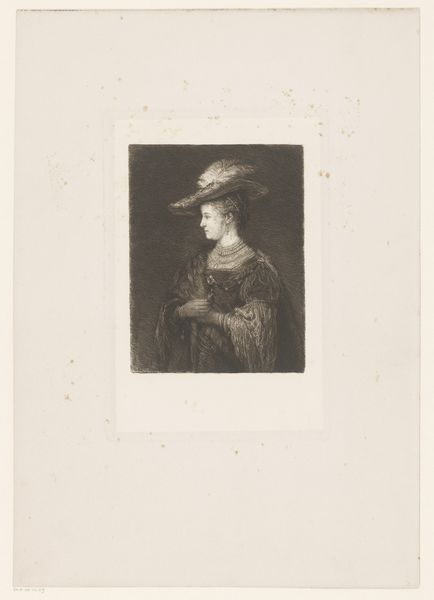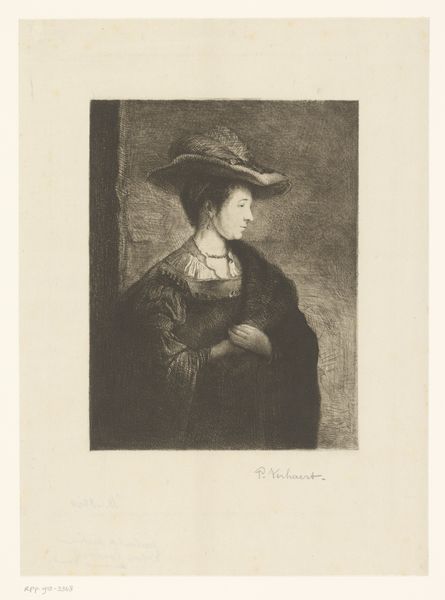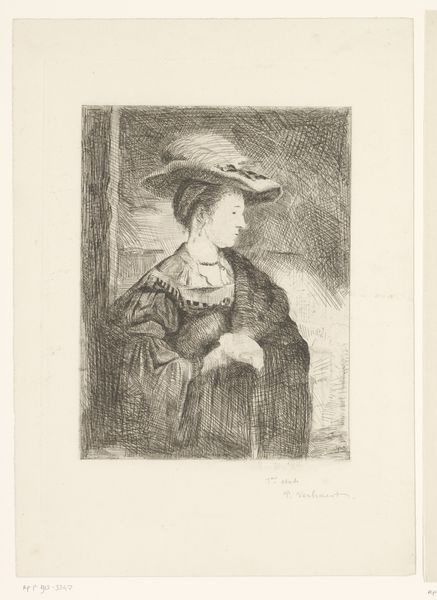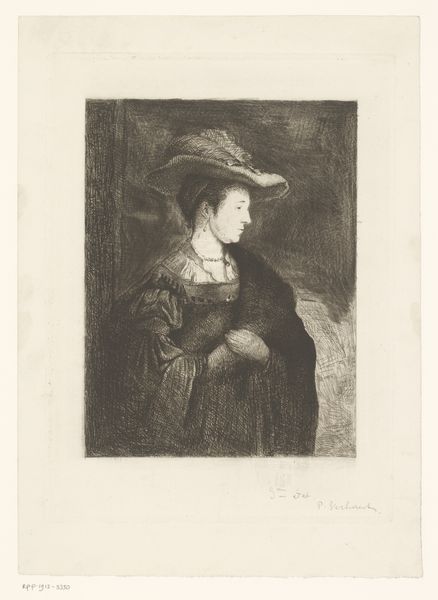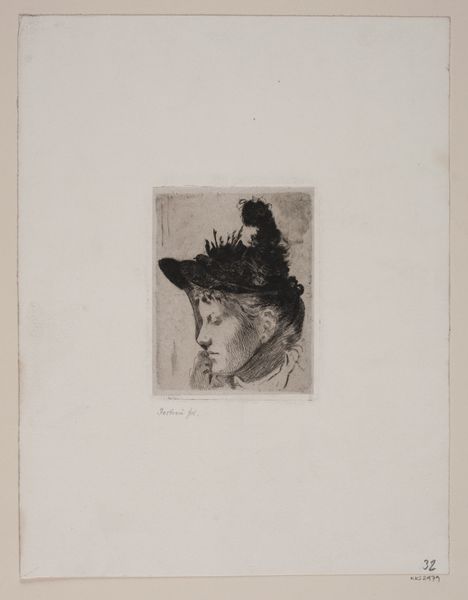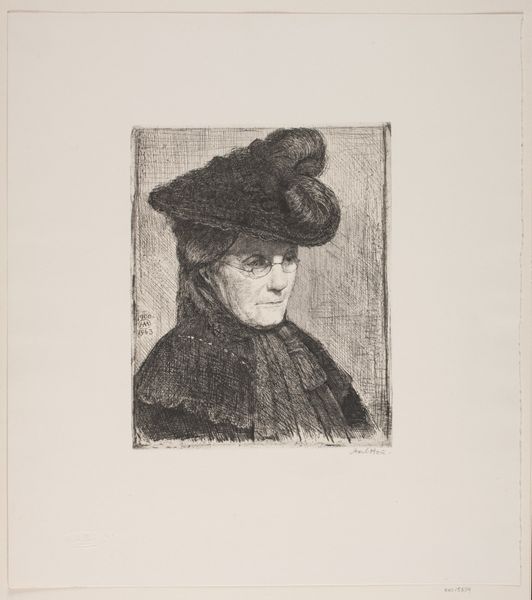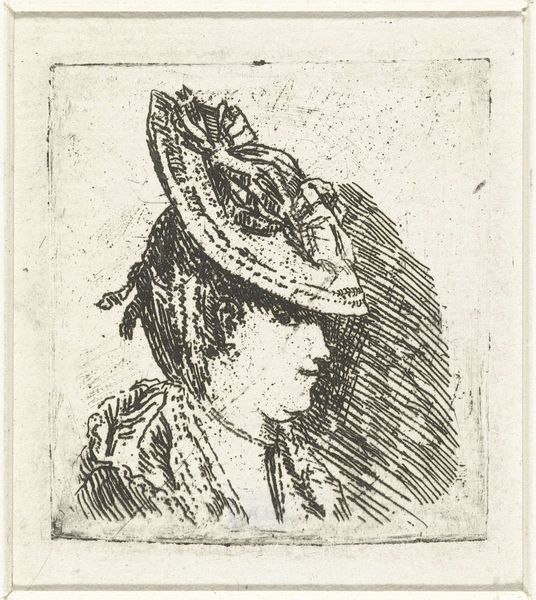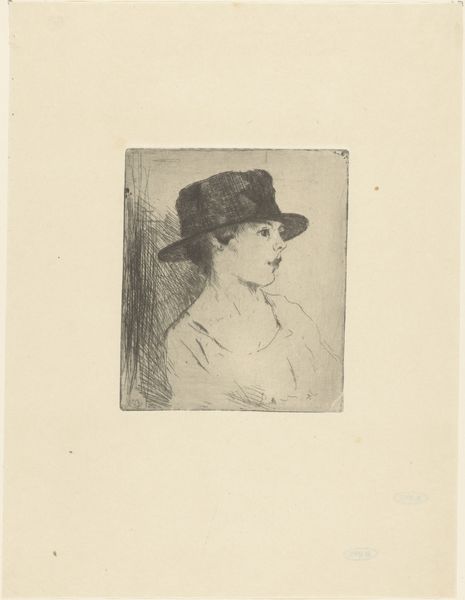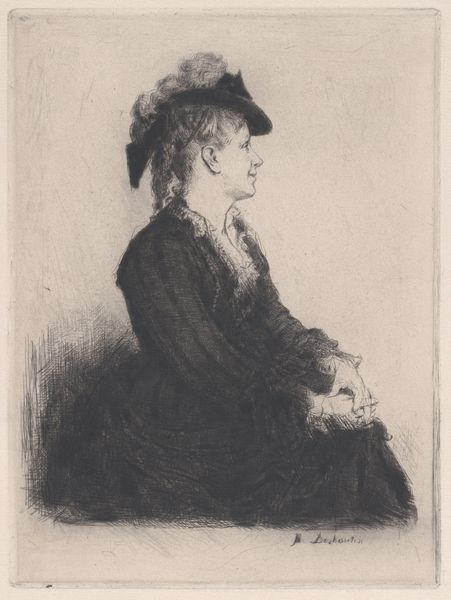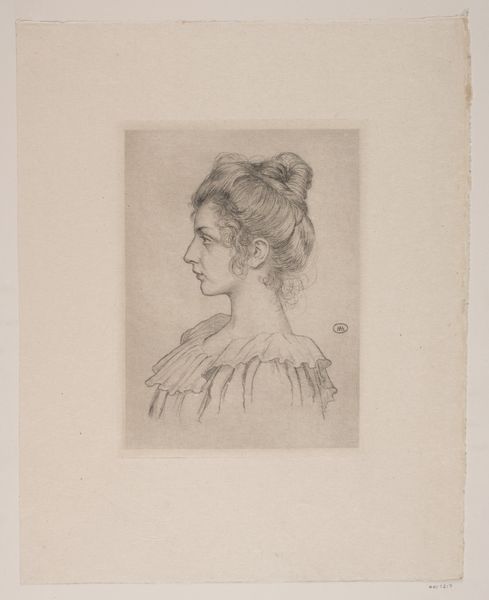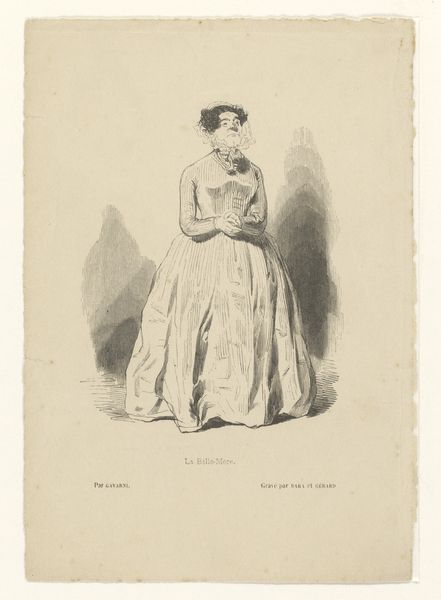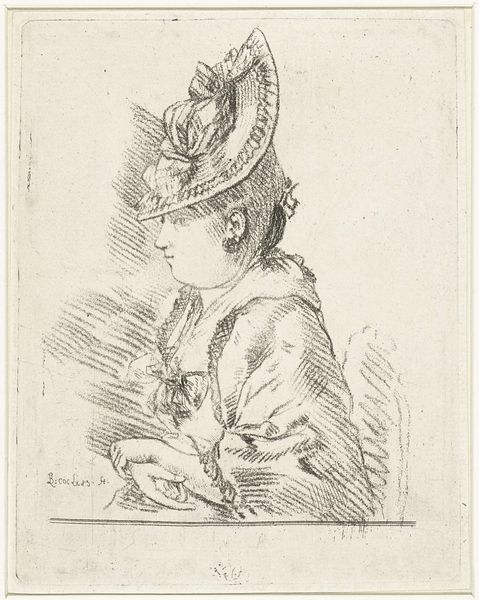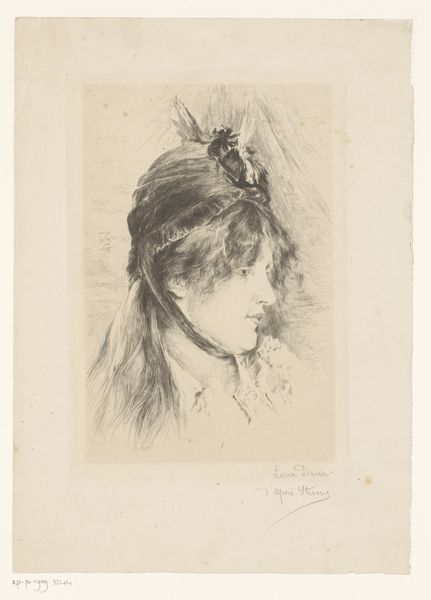
print, etching
#
pencil drawn
# print
#
etching
#
charcoal drawing
#
pencil drawing
#
history-painting
#
realism
Dimensions: height 312 mm, width 164 mm
Copyright: Rijks Museum: Open Domain
Editor: This is Léopold Flameng's "Portret van Saskia van Uylenburgh", created in 1869 using etching and print techniques. There's a fragility to the lines; it feels almost ephemeral. How would you approach understanding this piece? Curator: From a materialist perspective, it's crucial to consider the reproductive nature of etching. This isn't a unique, hand-painted portrait, but a print, designed for wider circulation and consumption. What does that tell us about Flameng’s intention, and the market he was engaging with? Were these prints destined for collectors, or a broader public hungry for images of Rembrandt’s world? Editor: So, the *reproducibility* is key. Does the etching technique itself contribute to a particular reading? Curator: Absolutely. The acid-etched lines create a distinct texture. It's a mediated process—the artist works with materials that allow for multiples, creating a commodity, almost. This places it in stark contrast to, say, Rembrandt's original painting which holds its aura through its singular materiality. Editor: That's fascinating! The texture does feel manufactured. Knowing that it's deliberately produced for distribution shifts my understanding. What’s more important here, the subject or the means by which it was replicated and dispersed? Curator: They are intrinsically linked. The subject, Saskia, lends a historical authenticity, and, dare I say, value, to a reproduced artwork made nearly 200 years after her death. One enables and reinforces the other. The print’s function and its reception is directly affected by its source, while that source simultaneously finds increased cultural significance due to the proliferation of images, like this etching. Editor: I never considered the labor involved in creating these etchings and prints and how they circulate in the art world. Curator: Exactly. It forces us to think beyond just aesthetics, to the processes of production, consumption, and the social lives of images. Editor: Thank you. I’ll definitely be thinking about art production a bit differently now.
Comments
No comments
Be the first to comment and join the conversation on the ultimate creative platform.
